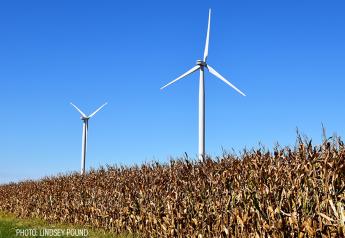A Look at Drought Stress in North Dakota Corn

The United States Drought Monitor map shows that all of North Dakota is currently impacted by some level of moisture stress, with a large portion of the state under extreme drought conditions. Unfortunately, the forecast for rainfall for the next 10 days does not look promising. There is growing concerns about the effect of drought on the developing corn crop. Water is essential for numerous chemical reactions in the crop plant and provides structure to cells and tissues. The vast majority of the water that the crop uses, however, is for transpiration. The transpiration stream brings nutrients and water from the soil via the roots to all parts of the plant, cools the plant, allows stomata to remain open and carbon dioxide to enter the leaves. When soil moisture is limiting, stomata close, reducing the availability for carbon dioxide, increasing the temperature of the leaf tissue, reducing photosynthesis, thereby slowing plant growth (in some cases hastening plant development). On the supply side of the water balance equation, the amount of moisture available to the plant is effected by previous rainfall, soil type and rooting depth. On the demand side, air temperature, relative humidly and the leaf area of the crop (canopy closure) are important. Now that there is nearly complete canopy closure in early-planted fields, the rate of transpiration is dependent on the weather and averages about 1.26 inches per week (Table 1).
The impact of drought on corn yield varies considerably depending on its timing and severity. There is little impact of short periods of drought on corn growth during early vegetative stages (Table 1). Data in this table assume that the stress is alleviated after the indicated period and is only provided in order to show the relative sensitivity of corn to moisture stress at differing stages. Obviously, plants that are currently showing signs of drought stress that do not receive additional moisture soon will not be productive. Currently most of the corn in North Dakota is in the 5 to 10 leaf stage, so is tolerant to short periods of drought stress.
Recent data from Iowa found that roots of corn plants at the V-10 stage are about 30 inches deep and will grow about 1.2 inches downward per day during this time of year. Heavier soils contain from 1.5-2.5 inches of water per foot of soil depth (Table 2). Therefore, a heavier soil that had a full soil profile this spring has the capacity to carry a crop for a couple of weeks in the absences of any new precipitation if root growth is not restricted. This suggests that for the eastern and northeastern part of the state, water stress has probably not yet affected the yield of corn crop adversely, but that rain is needed soon. For the southwestern part of the state in areas classified as severe and extreme drought, damage to crop has probably already been substantial (beyond what would be indicated in Table 1 given the duration of the stress) and rain is urgently needed if it is to survive.








